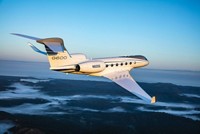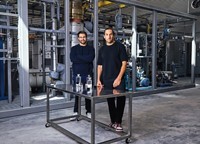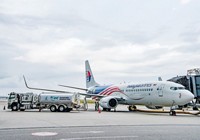Advertisement
Grab your lab coat. Let's get started
Welcome!
Welcome!
Create an account below to get 6 C&EN articles per month, receive newsletters and more - all free.
It seems this is your first time logging in online. Please enter the following information to continue.
As an ACS member you automatically get access to this site. All we need is few more details to create your reading experience.
Not you? Sign in with a different account.
Not you? Sign in with a different account.
ERROR 1
ERROR 1
ERROR 2
ERROR 2
ERROR 2
ERROR 2
ERROR 2
Password and Confirm password must match.
If you have an ACS member number, please enter it here so we can link this account to your membership. (optional)
ERROR 2
ACS values your privacy. By submitting your information, you are gaining access to C&EN and subscribing to our weekly newsletter. We use the information you provide to make your reading experience better, and we will never sell your data to third party members.
Energy
Air Company launches sustainable aviation fuel
CO₂-to-chemical firm is using vodka as a step-stool to carbon-neutral jet fuel
by Craig Bettenhausen
September 27, 2022

The idea of capturing carbon dioxide and using it as a feedstock for valuable chemicals and materials can seem like a pipe dream. But it felt real last week at a swanky launch party in Brooklyn, New York, where guests sipped on vodka made from captured CO2.
The event was put on by Air Company, the carbon-utilization start-up that has been hydrogenating CO2 to make its Air Vodka since 2020. At the party, the firm announced it is expanding from turning out $75-a-bottle vodka to making low-carbon jet fuel for some of the world’s biggest consumers.
After a brief recounting of the firm’s journey so far, CEO and cofounder Gregory Constantine showed a video, taken 2 months earlier, of a US Air Force fighter jet taking off, powered by Air Company’s sustainable aviation fuel (SAF). Constantine told the crowd that the firm has buyers for its first 1 billion gal (3.8 billion L) of SAF, including the US military, the airlines JetBlue and Virgin Atlantic, and the jet maker Boom Supersonic.
One billion gallons is a lot of jet fuel, and having those commitments will help Air Company attract the partners and investment it will need to build commercial-scale plants, says Will Thurmond, CEO of the biofuel market research firm Emerging Markets Online. But Thurmond cautions that such advanced purchase agreements are relatively common among aspiring SAF makers and don’t guarantee production.
“There are more announcements that ‘We’re going to make it’ than there are announcements of ‘We have delivered it.’ So I would take it with a grain of salt,” he says.
Almost all SAF available today is made from waste oils and fats, but the limited supply of that feedstock is mostly claimed already. Companies including Gevo and LanzaJet are building plants that will convert biobased alcohol into SAF. Air Company’s cofounder and chief technical officer, Stafford Sheehan, said his firm’s SAF will come from adjusting the catalyst and process it now uses for ethanol to favor fuel-range hydrocarbons.
Thurmond says the aviation market, which is betting on SAF to decarbonize commercial air travel, is eager for low-carbon fuel. “There’s enough demand out there to justify it,” he says, “as long as they can demonstrate that they can do what they say they can do.”
Air Company’s products are the result of the chemical reduction of captured CO2, and Sheehan acknowledged that they will only be as climate-friendly as the energy that powers the process. As of 2021, the US electrical grid was 19% nuclear, 20% renewables, and 61% fossil fuels.
When the presentations were done, Sheehan and other senior staff took groups across the street to tour the firm’s recently completed pilot plant. Within two years, Sheehan said, the company will build a demonstration-scale jet fuel plant with capacity to make hundreds of thousands of gallons per year. It plans to ramp up from there to a “world-scale plant to rival fossil fuel production.”
By the end of the evening, guests had been able to sample plenty of Air Company’s current offering. Constantine said vodka is a high-value, low-volume product that put the firm on a path to materials with bigger global impact. “We thought we’d monetize our R&D, which many of you are partaking in tonight,” he said.
CORRECTION:
This story was updated on Sept. 28, 2022, to correct the time of the US Air Force test flight. It occurred 2 months before the event announcing it, not 2 weeks.





Join the conversation
Contact the reporter
Submit a Letter to the Editor for publication
Engage with us on Twitter